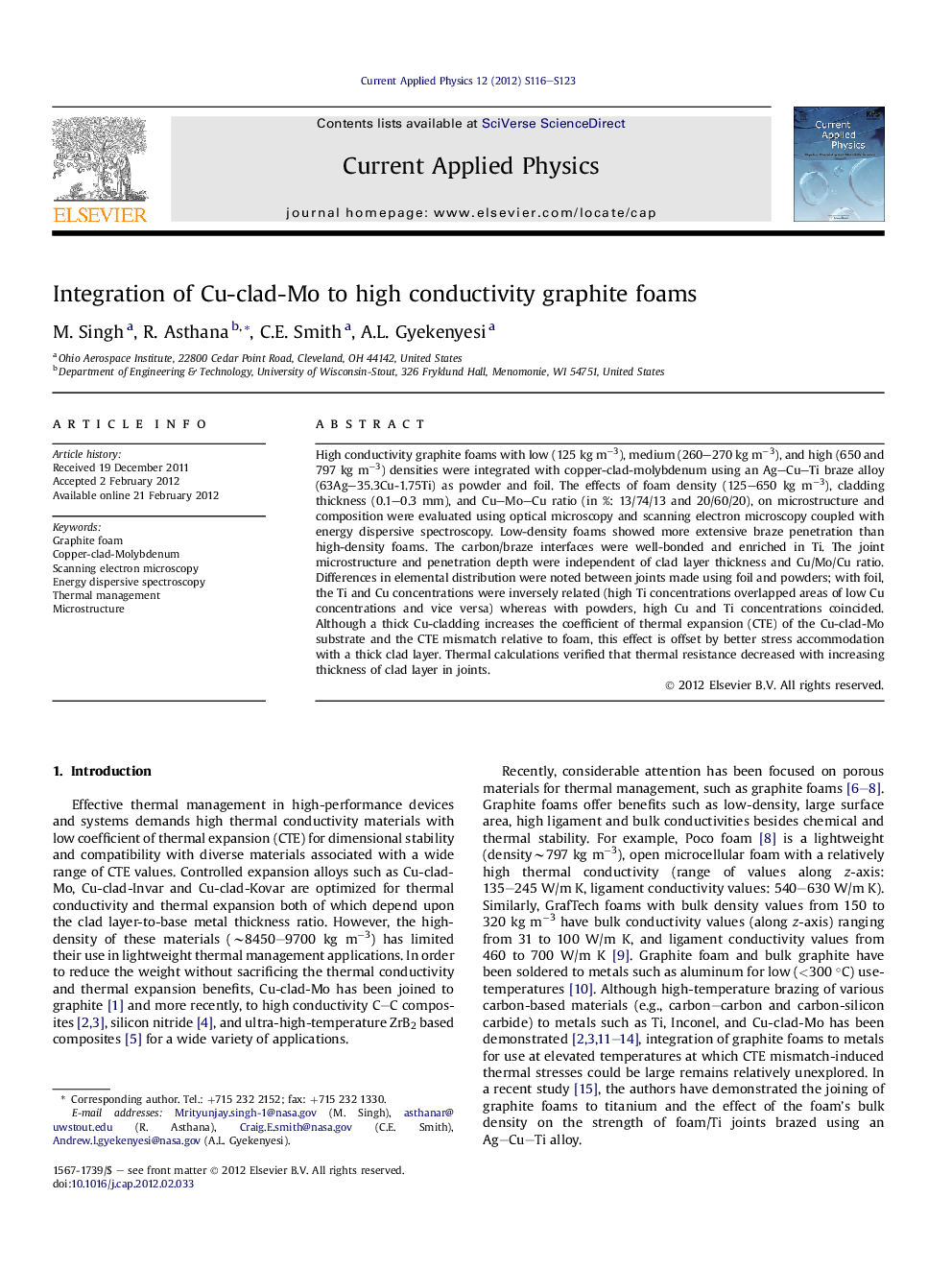| کد مقاله | کد نشریه | سال انتشار | مقاله انگلیسی | نسخه تمام متن |
|---|---|---|---|---|
| 1787210 | 1023434 | 2012 | 8 صفحه PDF | دانلود رایگان |

High conductivity graphite foams with low (125 kg m−3), medium (260–270 kg m−3), and high (650 and 797 kg m−3) densities were integrated with copper-clad-molybdenum using an Ag–Cu–Ti braze alloy (63Ag–35.3Cu-1.75Ti) as powder and foil. The effects of foam density (125–650 kg m−3), cladding thickness (0.1–0.3 mm), and Cu–Mo–Cu ratio (in %: 13/74/13 and 20/60/20), on microstructure and composition were evaluated using optical microscopy and scanning electron microscopy coupled with energy dispersive spectroscopy. Low-density foams showed more extensive braze penetration than high-density foams. The carbon/braze interfaces were well-bonded and enriched in Ti. The joint microstructure and penetration depth were independent of clad layer thickness and Cu/Mo/Cu ratio. Differences in elemental distribution were noted between joints made using foil and powders; with foil, the Ti and Cu concentrations were inversely related (high Ti concentrations overlapped areas of low Cu concentrations and vice versa) whereas with powders, high Cu and Ti concentrations coincided. Although a thick Cu-cladding increases the coefficient of thermal expansion (CTE) of the Cu-clad-Mo substrate and the CTE mismatch relative to foam, this effect is offset by better stress accommodation with a thick clad layer. Thermal calculations verified that thermal resistance decreased with increasing thickness of clad layer in joints.
Journal: Current Applied Physics - Volume 12, Supplement 2, September 2012, Pages S116–S123